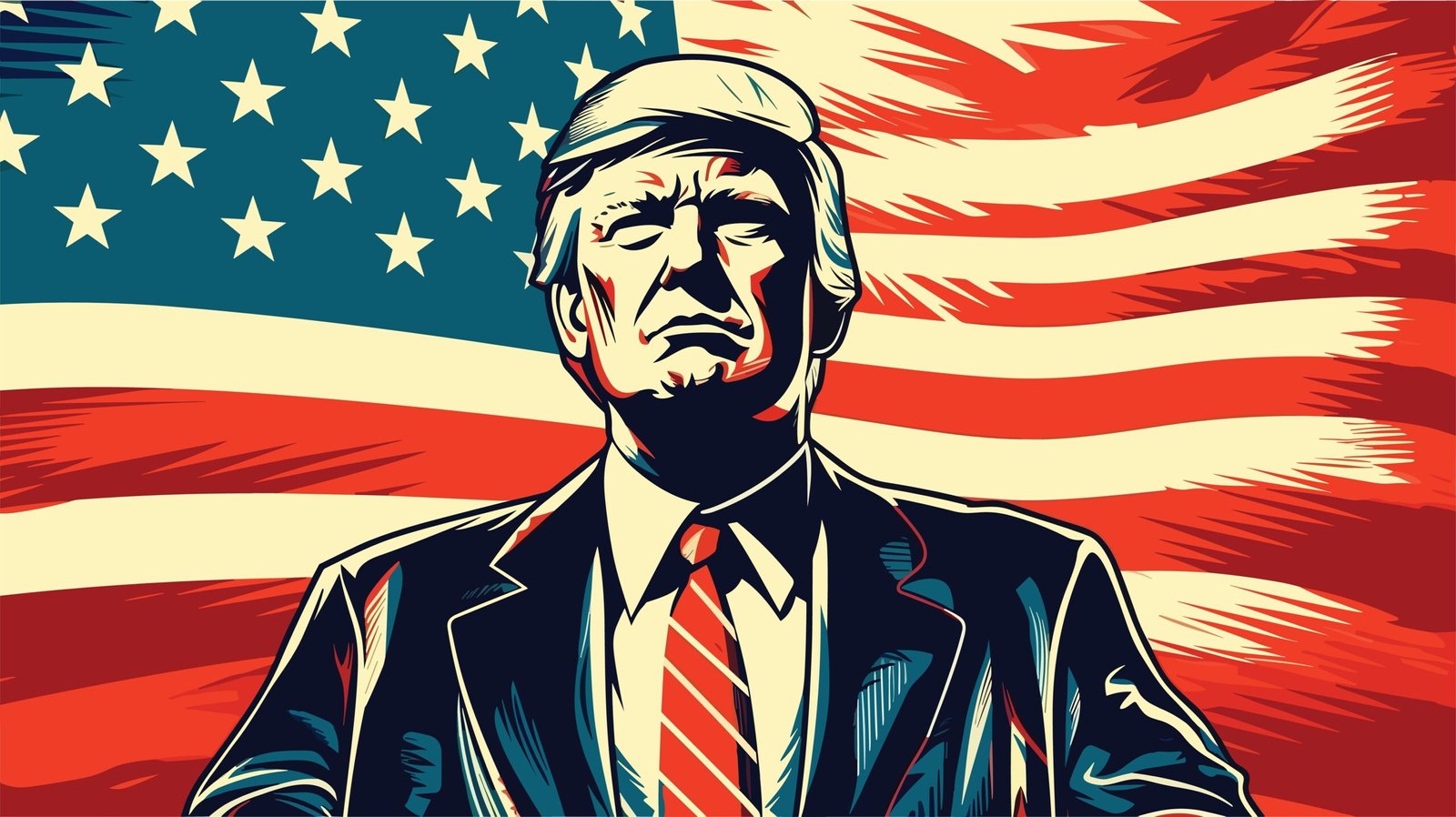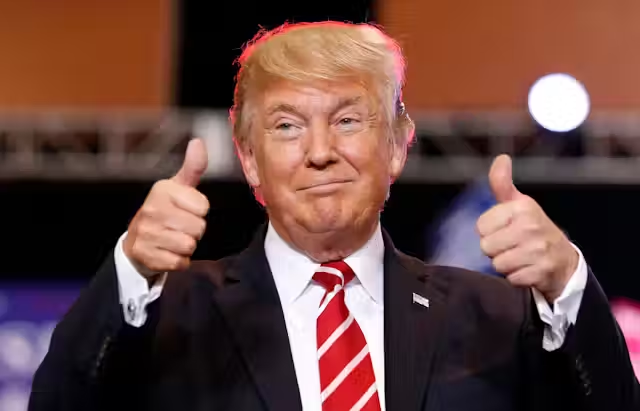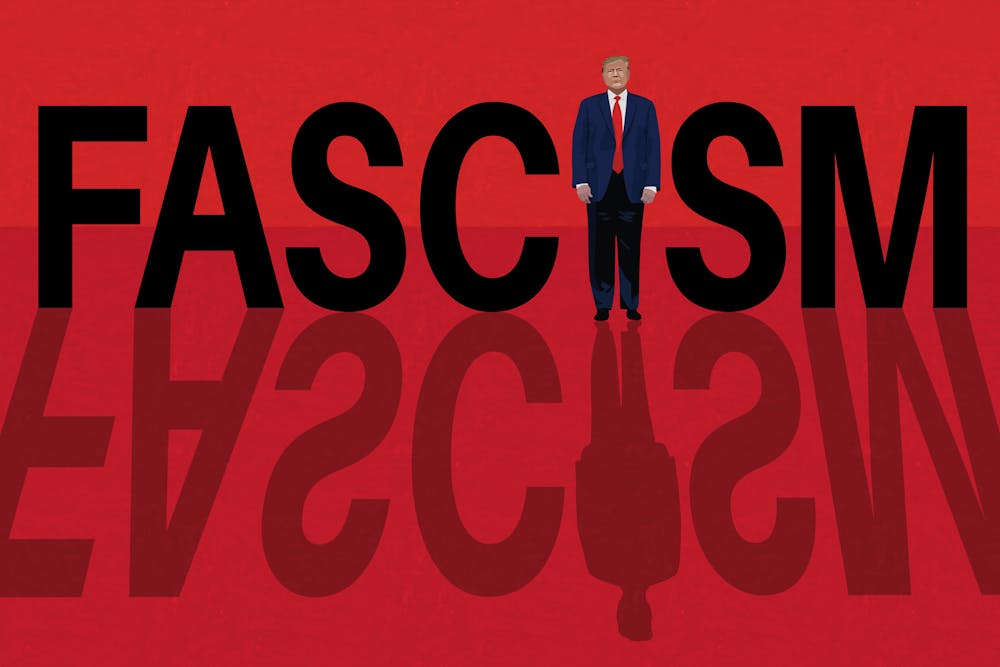“History has shown us what happens when democracy flirts with authoritarianism. Could Trumpism be America’s version of that dangerous dance?”
The word fascism carries heavy weight—it’s tied to some of the darkest moments in world history. Yet, in recent years, the term has resurfaced in a heated debate surrounding former U.S. President Donald Trump and the movement often described as Trumpism. Critics argue that Trump’s brand of politics—marked by fiery nationalism, strongman rhetoric, and attacks on democratic institutions—echoes the characteristics of fascism. Supporters, on the other hand, dismiss the comparison as exaggerated, claiming Trumpism is nothing more than patriotic populism.

So, is Trumpism truly a modern form of fascism, or is the comparison unfair? To answer that, we first need to understand the fascism definition, its history, and the traits that make this ideology so dangerous. By looking at where fascism came from and how Trumpism operates today, we can take a deeper dive into this ongoing debate—and why it matters for the future of democracy.
What Is Fascism?
When people hear the word fascism, they often think of dark chapters in history marked by dictatorship, violence, and fear. But what is the real fascism definition? At its core, fascism is a far-right, authoritarian political ideology that prioritizes strong, centralized power, extreme nationalism, and the suppression of opposition. It thrives on the idea that the nation—or sometimes even one leader—should come before individual freedoms.The characteristics of fascism can usually be spotted in patterns:
- A single leader with unchecked authority.
- Heavy use of propaganda to control public opinion.
- A strong “us vs. them” mentality, often targeting minorities or outsiders.
- Rejection of democracy and open debate.
- Glorification of the nation, military, or traditional values.
Looking back at the history of fascism, we see its most notorious examples in Benito Mussolini’s Italy and Adolf Hitler’s Nazi Germany during the 20th century. These regimes rose during times of economic hardship and social unrest, offering promises of order, pride, and strength. Instead, they led to war, oppression, and devastation.
Understanding fascism is not just about studying the past—it’s about recognizing the signs when they appear in today’s world. History reminds us that fascism often doesn’t announce itself loudly at first; it creeps in through popular slogans, charismatic leaders, and promises of “making a nation great again.”
What Is Trumpism?
Before we compare it to fascism, it’s important to understand Trumpism meaning in today’s political landscape. Trumpism is more than just Donald Trump’s presidency—it’s a political movement and mindset that has reshaped American politics. At its heart, Trumpism emphasizes nationalism, “America First” policies, skepticism of global institutions, and a tough stance on immigration and trade.
But Trump politics goes beyond policies. It’s about style and identity. Trumpism thrives on fiery speeches, mass rallies, and a direct connection with supporters through social media. It often challenges traditional political norms, portrays the media as an “enemy,” and appeals to voters who feel left behind by elites or globalism.
When we talk about Trump ideology, it combines elements of populism, conservatism, and strongman leadership. It’s less about a strict political doctrine and more about loyalty to Trump himself and his vision for America. Supporters see it as a bold rejection of the status quo, while critics warn that it undermines democratic institutions.

In short, Trumpism is not just about one man—it’s a movement that has changed how millions of people see politics, power, and even the future of democracy.
Parallels Between Fascism and Trumpism
When we line up the traits of historical fascism with the rise of Trumpism, it’s not hard to see why people draw comparisons. While the contexts are very different, certain themes echo across both movements—sparking the debate on Trumpism vs fascism.
One striking similarity is the cult of personality. Fascist leaders like Mussolini and Hitler built their movements around themselves, demanding loyalty above all else. In a similar way, Trumpism is deeply tied to Donald Trump as an individual, with many supporters showing allegiance to him rather than to the broader Republican Party.
Another parallel is nationalism. Fascism often thrived on the idea of putting the nation first, sometimes at the expense of outsiders or minorities. Trump’s “America First” slogan mirrors that sentiment, focusing on protecting American jobs, industries, and borders—often paired with a tough stance on immigration.
There’s also the attack on institutions and the media. Fascist regimes worked to discredit opposition voices and paint independent media as dishonest or corrupt. Trump, too, has frequently referred to mainstream media as “fake news,” framing them as enemies of the people.
Finally, both fascism and Trumpism rely heavily on rhetoric of division—an “us vs. them” mentality. Whether it’s immigrants, political rivals, or the press, the strategy is to rally supporters by pointing to a common enemy.These echoes don’t mean Trumpism is identical to historical fascism, but the comparisons highlight why scholars, critics, and citizens continue to ask: Is Trumpism fascist, or is it simply a unique brand of populist politics?
Key Differences Between Trumpism and Fascism
While it’s easy to see the echoes between the two, it’s just as important to understand the differences from fascism when looking at Trumpism. In the ongoing Trump fascism debate, many scholars point out that Trump operated within the framework of American democracy—even if he tested its limits.
For example, unlike traditional fascist regimes, Trumpism did not abolish elections or establish a one-party state. Trump ran for office, lost reelection, and left the White House under the rules of the U.S. Constitution, even if not without controversy. That distinction alone sets Trumpism apart from classical fascism, which sought to dismantle democracy altogether.
Another difference lies in the role of government. Fascist leaders centralized power tightly under the state, controlling nearly every aspect of life. Trump’s politics, however, leaned more toward deregulation, smaller government in some areas, and empowering businesses—a very different approach from the all-consuming control seen in fascist regimes.
Lastly, while fascism was openly militaristic and expansionist, Trumpism’s foreign policy was more about withdrawal and nationalism, focusing inward with an “America First” mindset rather than outward conquest.
In short, Trumpism does echo some authoritarian tendencies, but it also functions in a democratic framework with checks and balances. This balance is at the heart of the Trump democracy debate—whether his movement is a dangerous step toward authoritarianism, or simply a disruptive form of populist politics that still plays by democratic rules.
Expert Opinions and Public Debate
The question of whether Trumpism qualifies as fascism has fueled an ongoing fascism debate among scholars, journalists, and everyday citizens. Some historians argue that the movement mirrors fascist tendencies—pointing to its nationalism, attacks on the press, and the cult of personality around Trump. These Trump fascism arguments suggest that while America hasn’t become a fascist state, the warning signs are too significant to ignore.
On the other hand, many political experts on Trumpism emphasize the differences. They argue that Trump never dismantled democratic institutions in the way historical fascist leaders did. Courts continued to operate independently, elections still took place, and opposition parties remained strong. For these experts, labeling Trumpism as fascism risks oversimplifying a much more complex political reality.
Outside of academia, the public debate is just as intense. For critics, calling Trumpism fascist is a way of warning about threats to democracy. For supporters, it’s seen as an unfair smear against a populist movement that simply reflects the frustrations of ordinary Americans.
What’s clear from both sides of the fascism debate is that Trumpism has become more than just a presidency—it’s a phenomenon that forces people to confront big questions about democracy, freedom, and the future of politics in America.
Why This Debate Matters Today
At first glance, the question of whether Trumpism resembles fascism might feel like a purely academic argument. But in reality, this debate has very real consequences for how we see democracy and protect it in the modern world.
History shows us that authoritarian movements rarely appear overnight—they grow slowly, often disguised as patriotism or promises of strength. That’s why revisiting the lessons of fascism isn’t about looking backward—it’s about guarding against threats that can resurface in new forms. Whether you fully accept the comparison or not, the Trump fascism debate forces us to pay closer attention to the health of democratic institutions.

This conversation also matters globally. Around the world, strongman leaders are gaining popularity, from Europe to Asia, often using similar tactics of division, nationalism, and attacks on the press. By examining Trumpism closely, Americans aren’t just debating their own politics—they’re also joining a larger conversation about the future of democracy everywhere.
In short, this isn’t only about Trump. It’s about what kind of society we want to build, how we handle political division, and whether we can learn from history before it repeats itself.
Conclusion
So, is Trumpism a form of fascism? The honest answer is complicated. On one hand, there are undeniable parallels—charismatic leadership, nationalism, and attacks on the media—that make the comparison hard to ignore. On the other hand, America’s political system, its checks and balances, and the continued functioning of elections mark clear differences from fascism as we know it from history.
The Trump fascism debate ultimately isn’t about finding a perfect label—it’s about understanding the risks that come when democratic values are tested. Some traits align, but the context differs, and that distinction matters.
Still, one truth remains: history has shown us how fragile democracy can be. The rise of Trumpism, like many movements before it, should remind us to stay alert, engaged, and committed to protecting democratic principles. Whether or not we call Trumpism fascism, the lessons of history remind us to guard democracy carefully.
FAQs
1. What is the definition of fascism?
Fascism is a far-right, authoritarian political ideology that prioritizes strong leadership, nationalism, and the suppression of opposition. It often rejects democracy and promotes control through propaganda and fear.
2. What does Trumpism mean in politics?
Trumpism refers to the political style and movement inspired by Donald Trump. It emphasizes “America First” policies, populist rhetoric, skepticism of global institutions, and a strong personal connection between Trump and his supporters.
3. Is Trumpism considered fascism?
This question is at the center of the ongoing fascism debate. Some experts see parallels—such as nationalism and attacks on the media—while others argue that Trumpism operates within a democratic system, which makes it different from historical fascism.
4. What are the main differences between Trumpism and fascism?
Key differences from fascism include the fact that Trump did not abolish elections or create a one-party state. While he pushed boundaries, America’s democratic institutions continued to function, which separates Trumpism from classical fascist regimes.
5. Why does the Trump–fascism debate matter today?
It matters because it forces us to look closely at the health of democracy—not only in the U.S. but around the world. Whether or not we call Trumpism fascism, studying the parallels helps us learn from history and protect democratic values.
For a deeper look into Trump’s contradictions beyond policy debates, check out our analysis of his disputed signature and revealing letters in this article here.